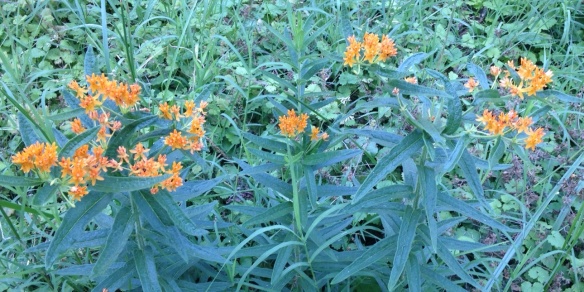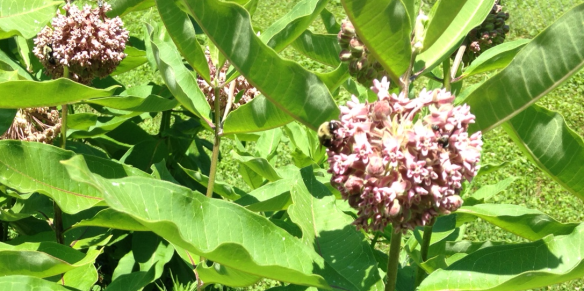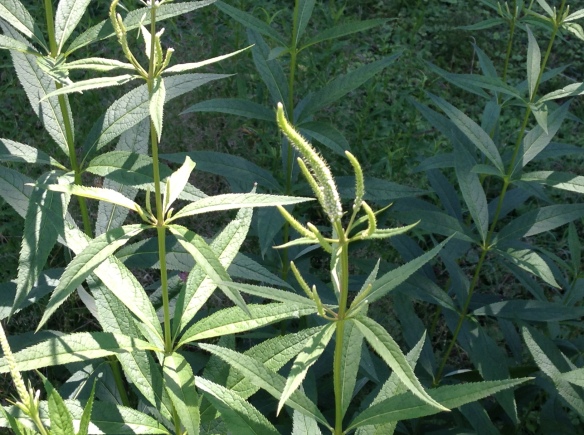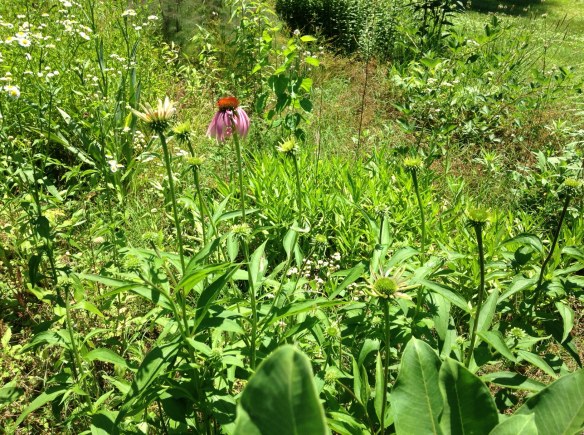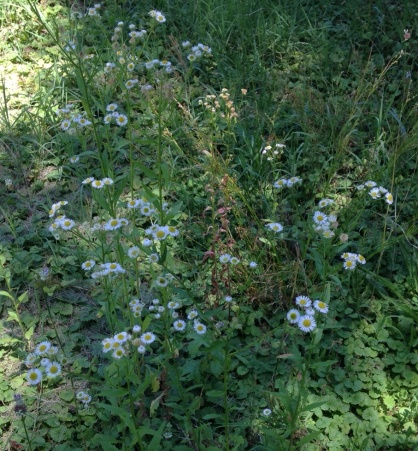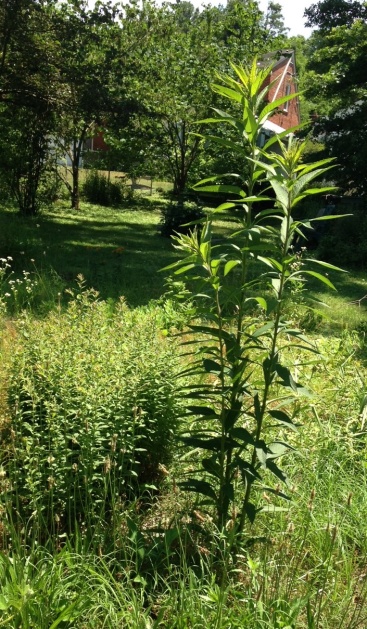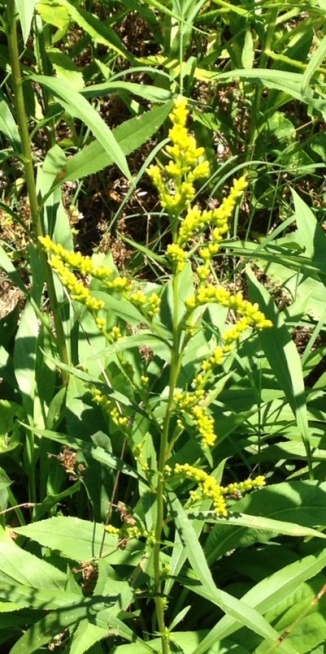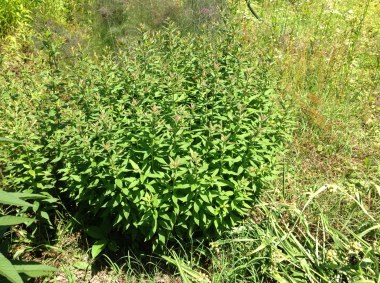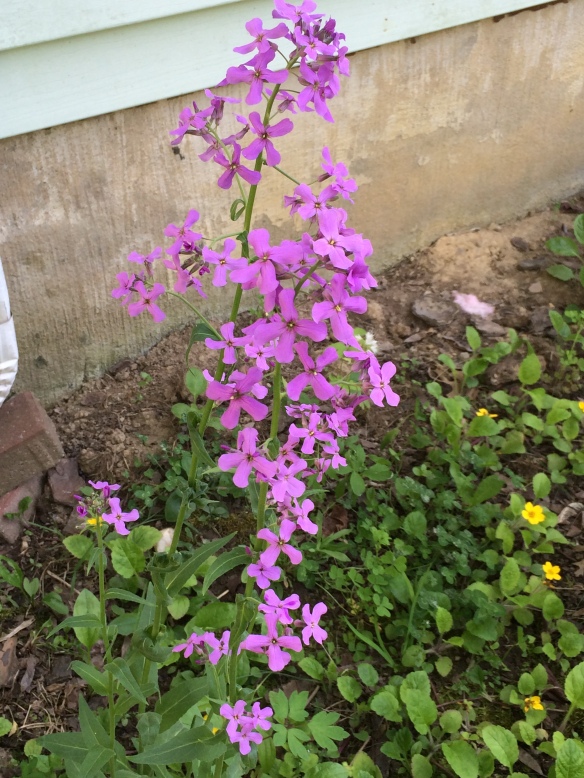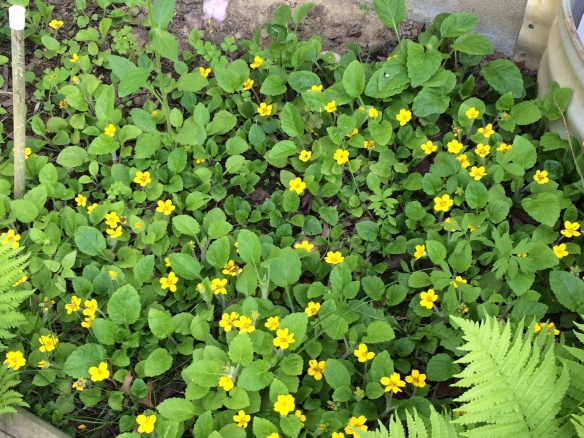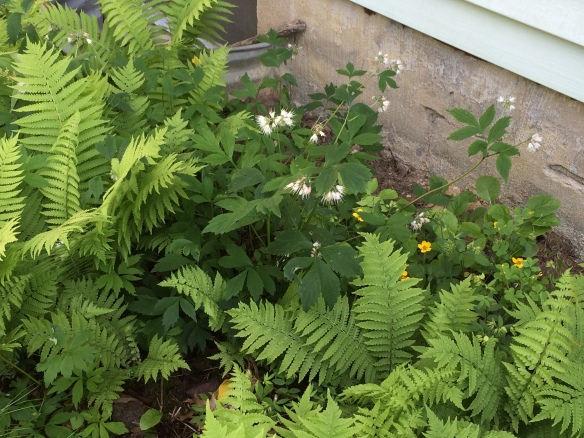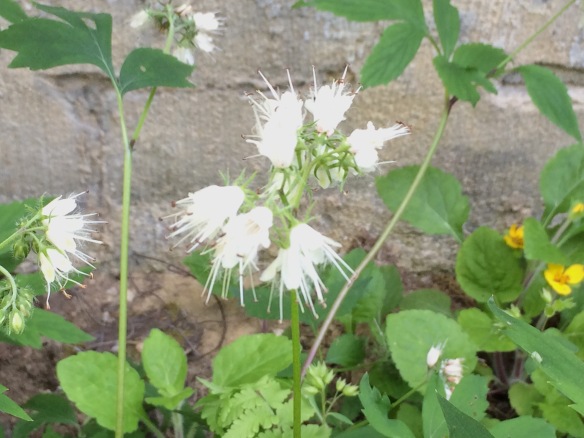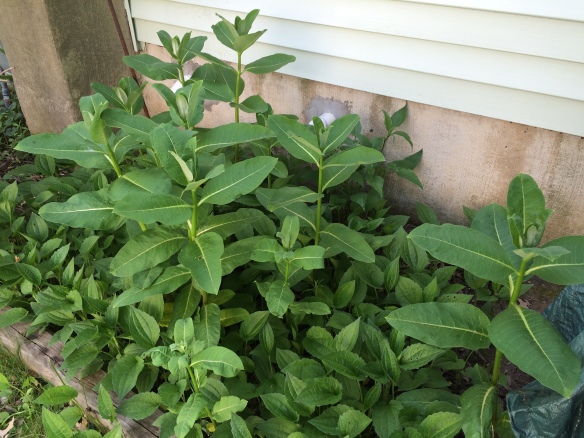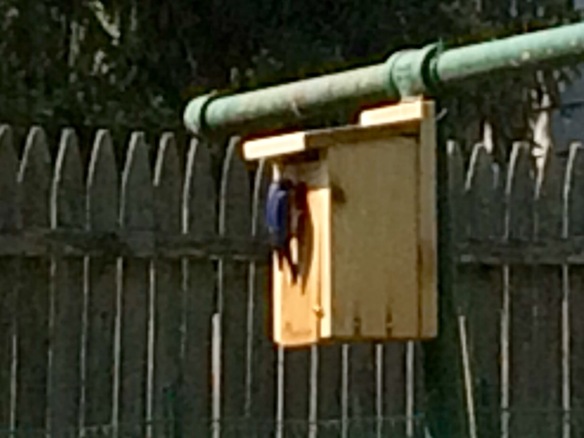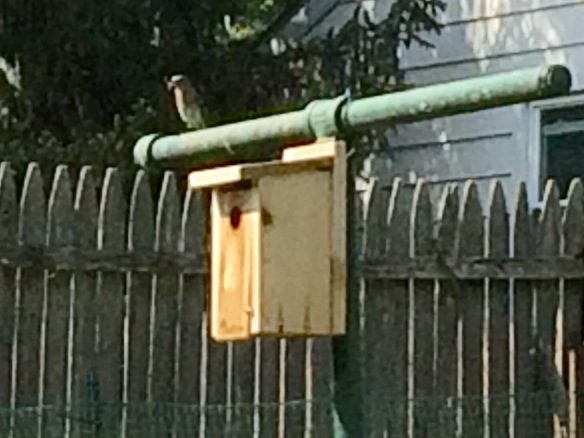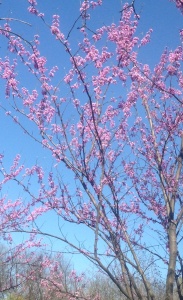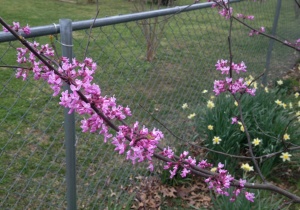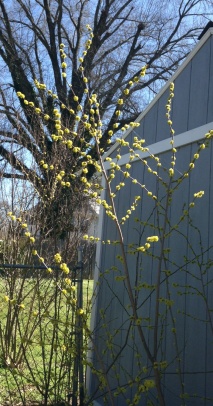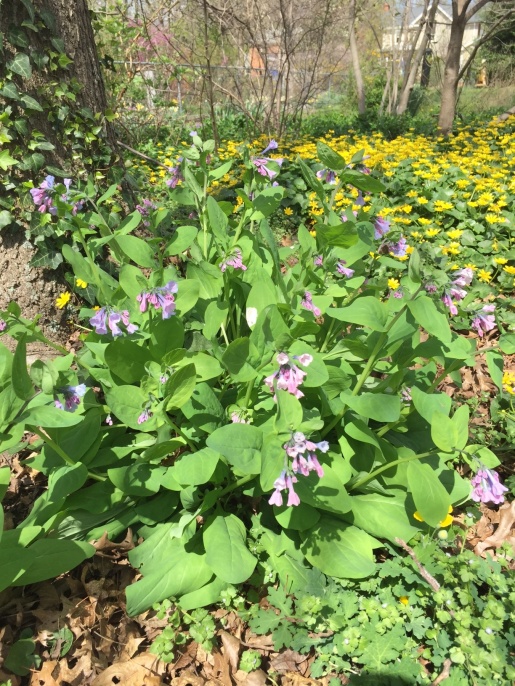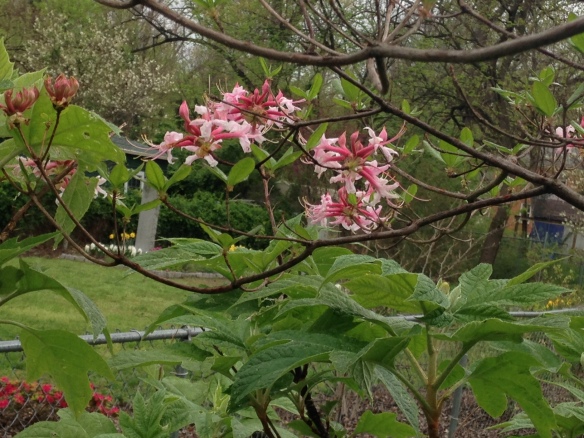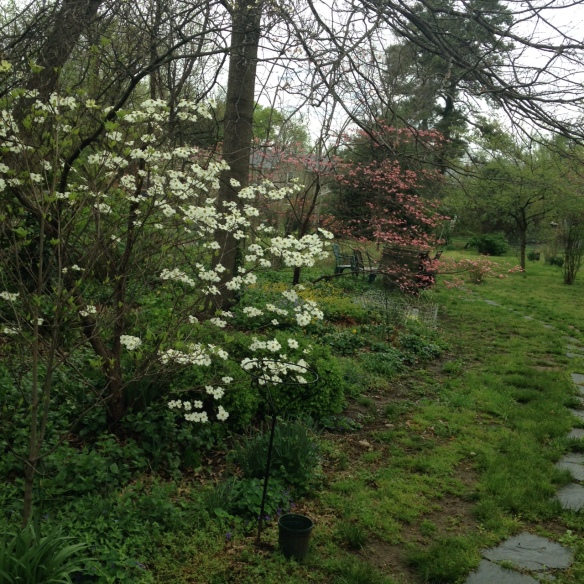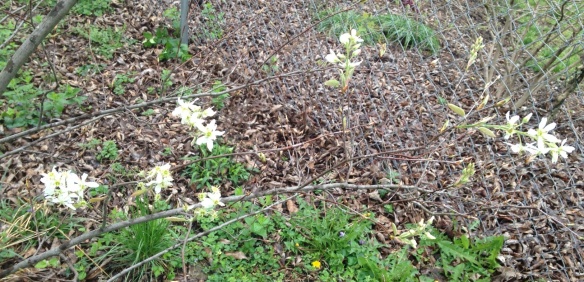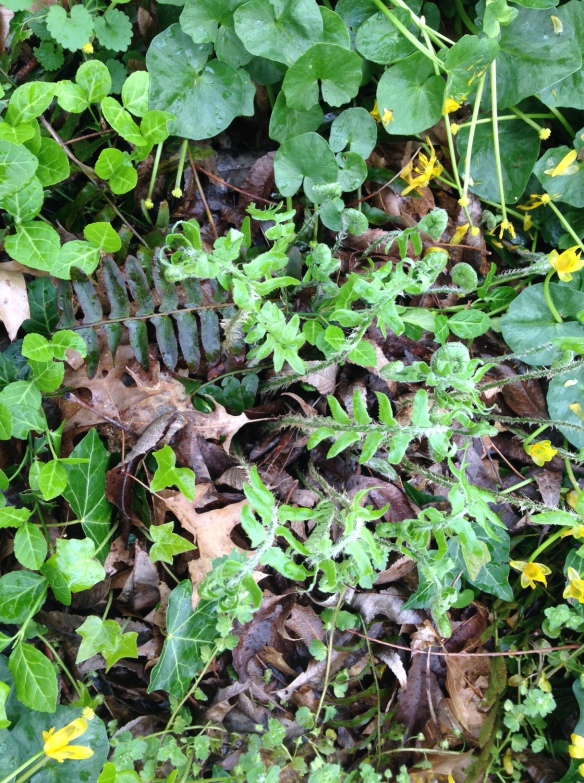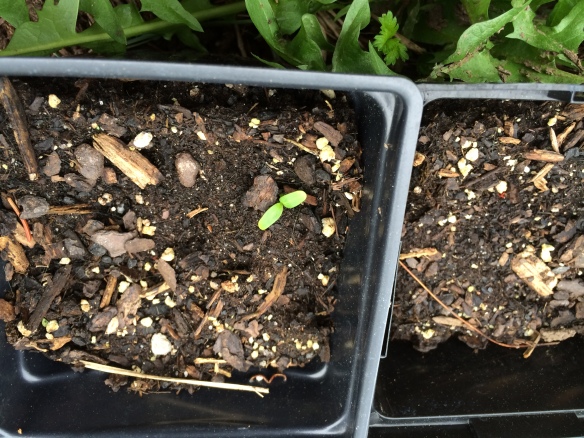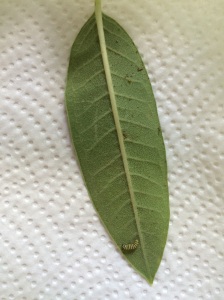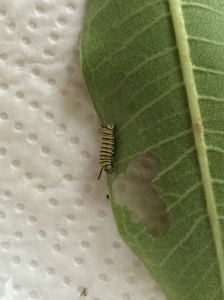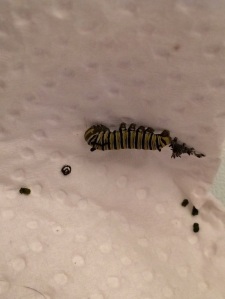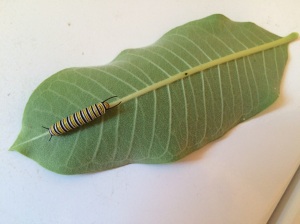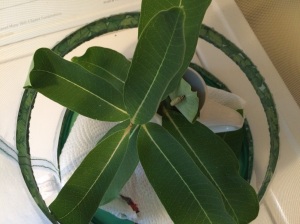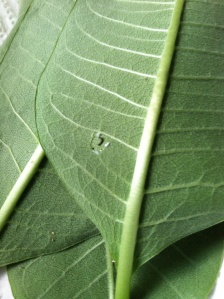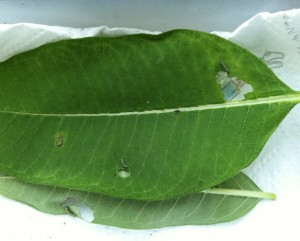In my last post, I told about finding three tiny monarch caterpillars on my milkweed and bringing them inside to raise by hand. It was astounding how quickly they grew! By the next day they had doubled in size from 1/8 inch to 1/4 inch long. Unfortunately, I had to leave on Aug. 1st for twelve days, so I left them in the capable hands of my friend who cat sits for me, henceforth known as my “cat-erpillar” sitter. I was sorry to miss out on their caterpillarhood, but she faithfully sent me pictures of their rapid growth. On Aug. 9th, the first caterpillar made its chrysalis, then the other two made theirs on Aug. 10th. I was home on Aug. 12th, so was able to observe the three chrysalises hanging in their mesh butterfly habitat, and on Aug. 19th, exactly 10 days after making the chrysalis, the first butterfly eclosed! The second two butterflies eclosed on Aug. 20th. I missed the emergence of the first butterfly, but made sure I was present for the other two the next day. What a fun experience to witness right on my kitchen table!
Here are pictures of their growth and development from caterpillar to butterfly. All three turned out to be males. Good luck, little guys!
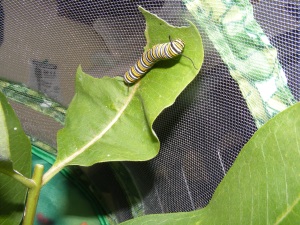
Here is one at about 1.5 inches, enjoying its leaf.
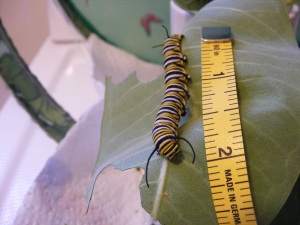
Two inches long now!
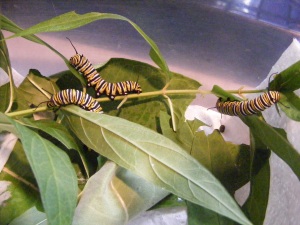
Family portrait
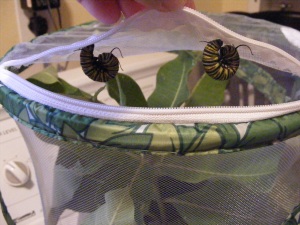
Hanging from the roof of the cage, making their “J”, just before making the chrysalis.
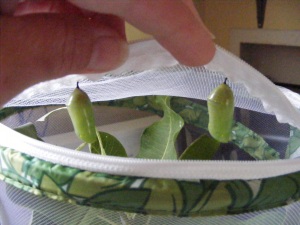
Two chrysalises, waiting patiently while a miracle is happening inside!
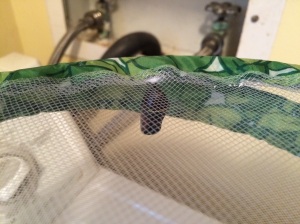
Look what happened overnight! The first one has turned dark and the orange and black wings of the butterfly can be seen. The butterfly will eclose in about two hours.
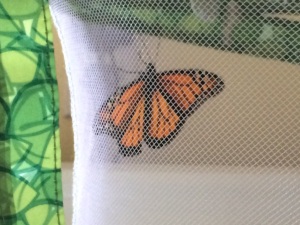
Ta da!! Just beautiful!
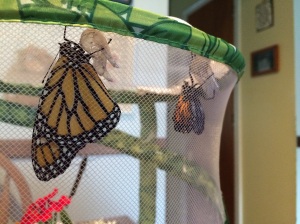
The other two eclosed the next day. The first one came out exactly 10 minutes before the second. What a difference in 10 minutes!
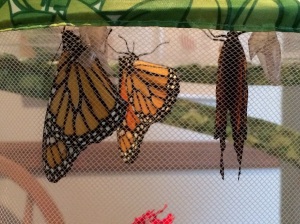
Here are all three in their glory!
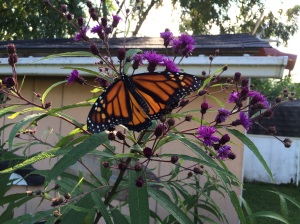
I released them on Aug. 21 on my New York Ironweed. The oldest one took off immediately for my neighbor’s oak tree, but the other two hung around for about 20 minutes before flying off.
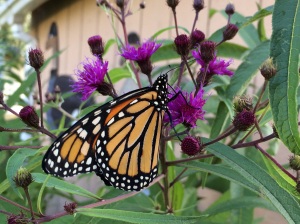
One of them is having a sip of nectar!
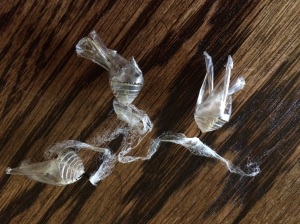
Now I have an empty nest…here are the three empty chrysalises. Note all the silk that was used to attach them to the roof of the cage.

